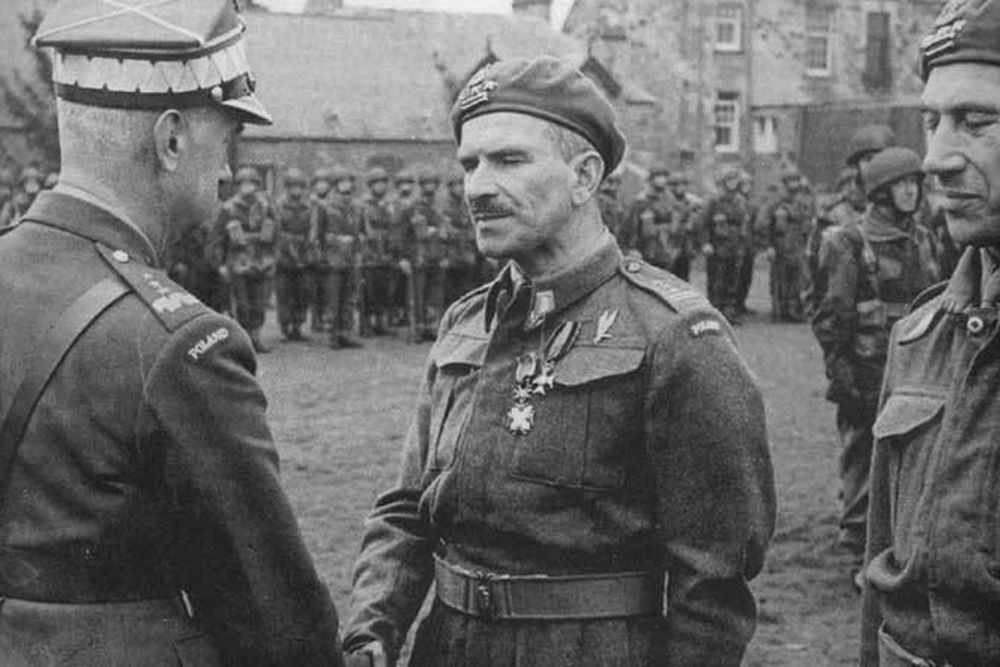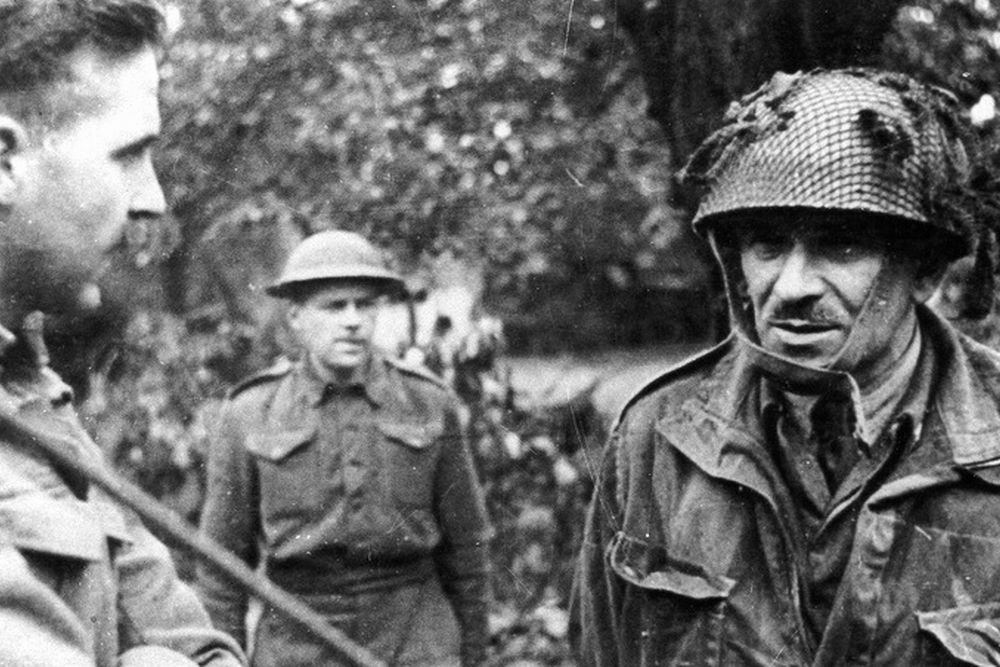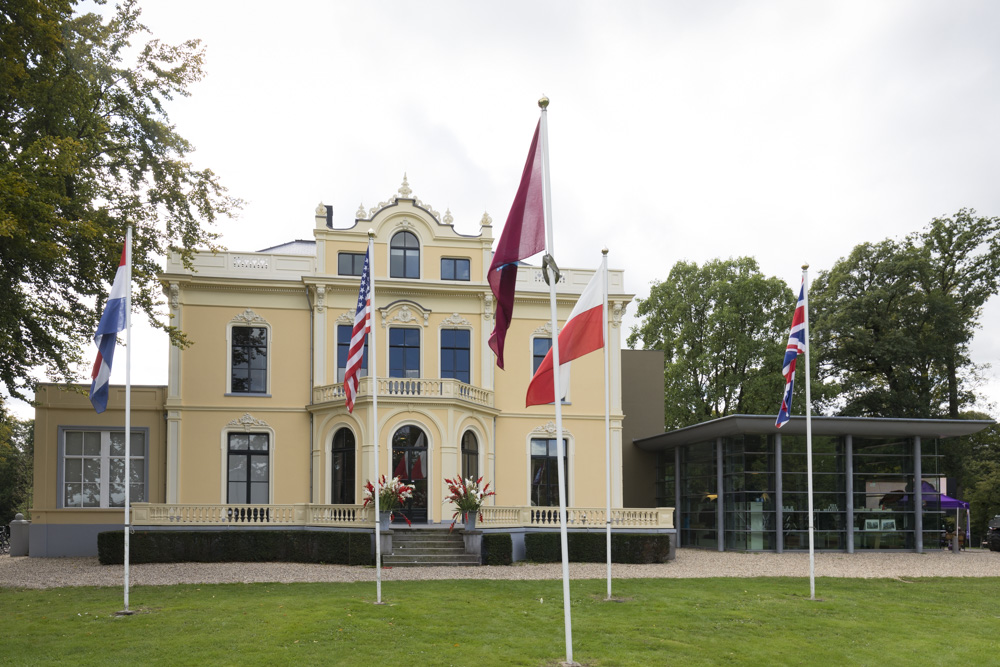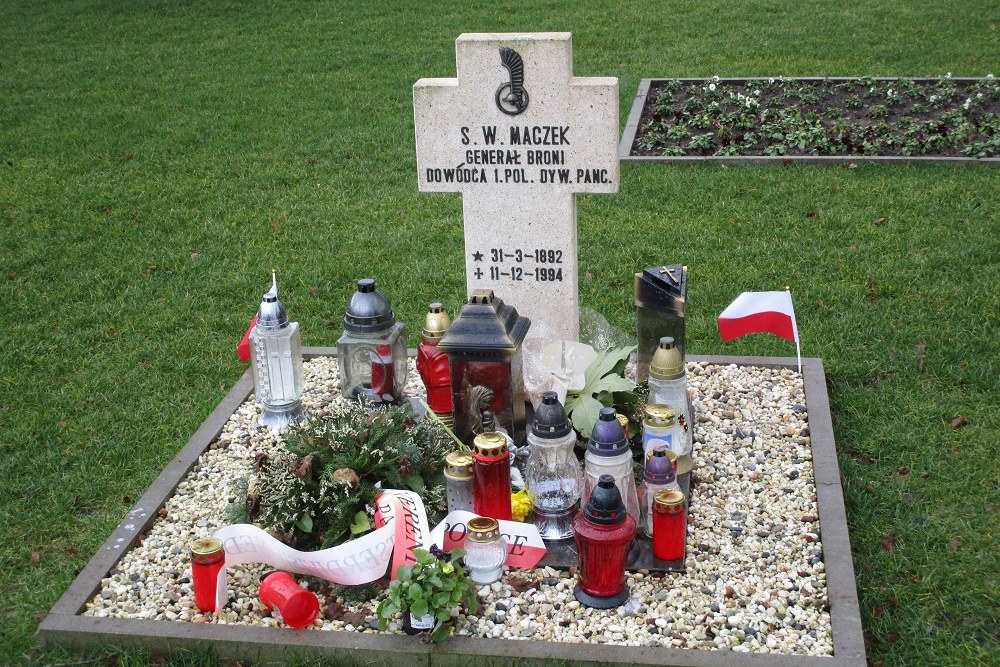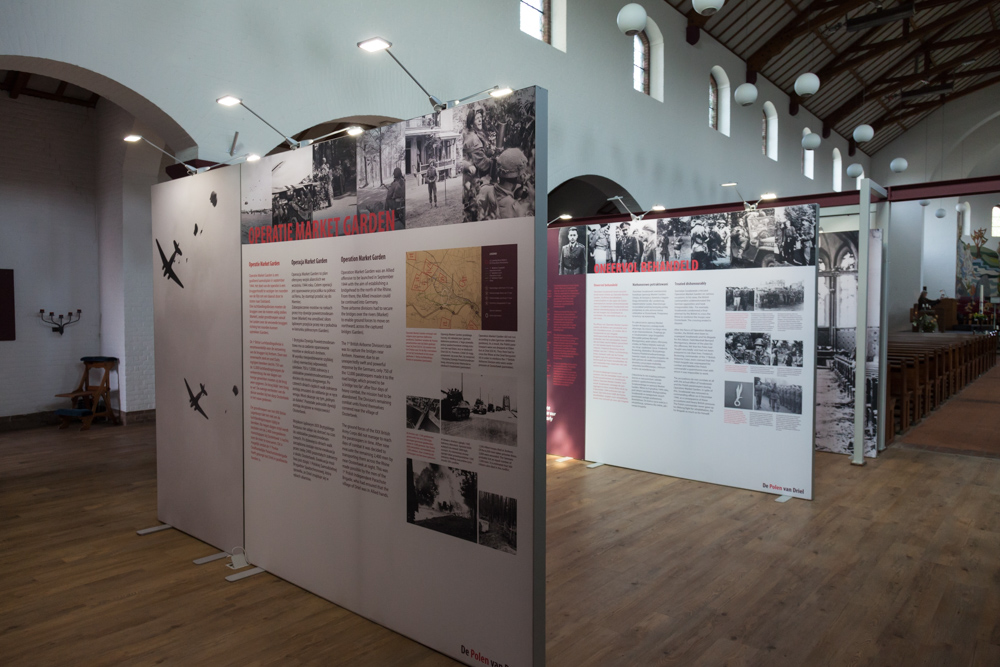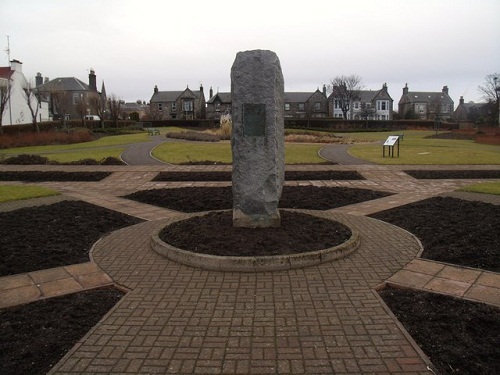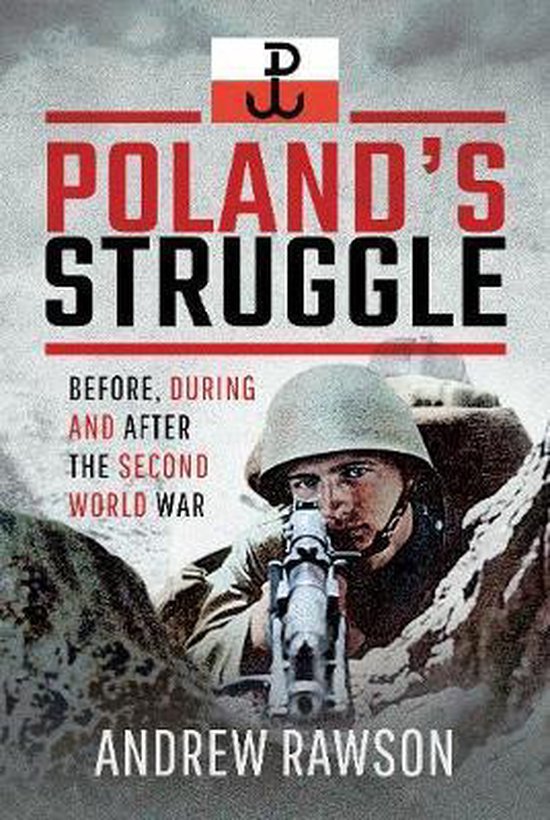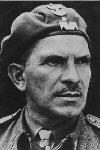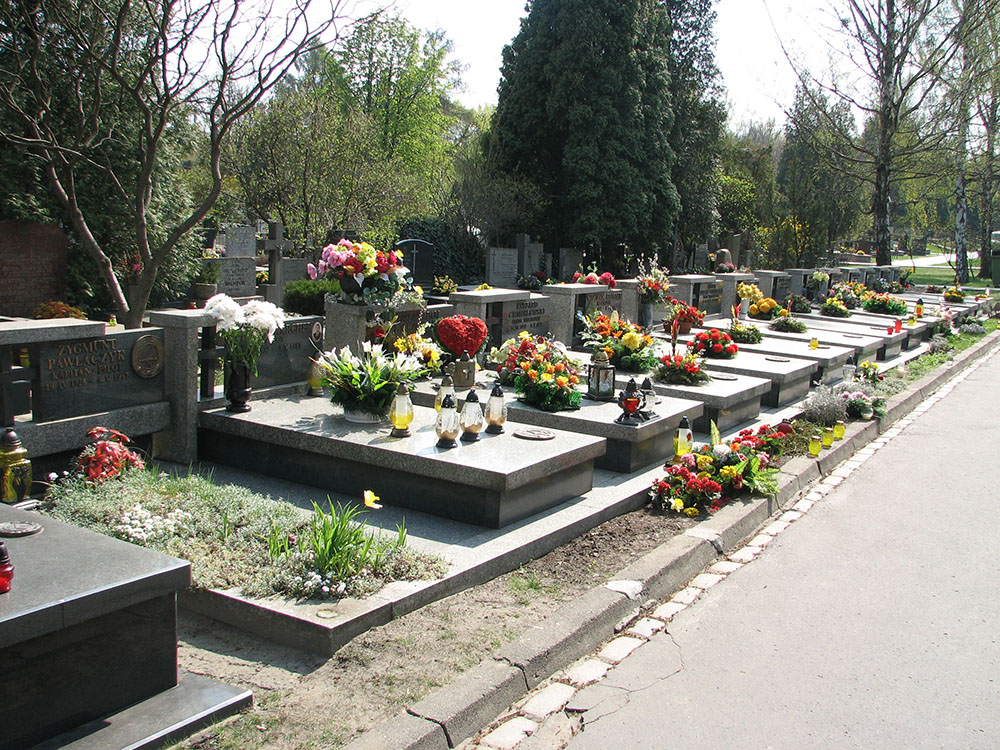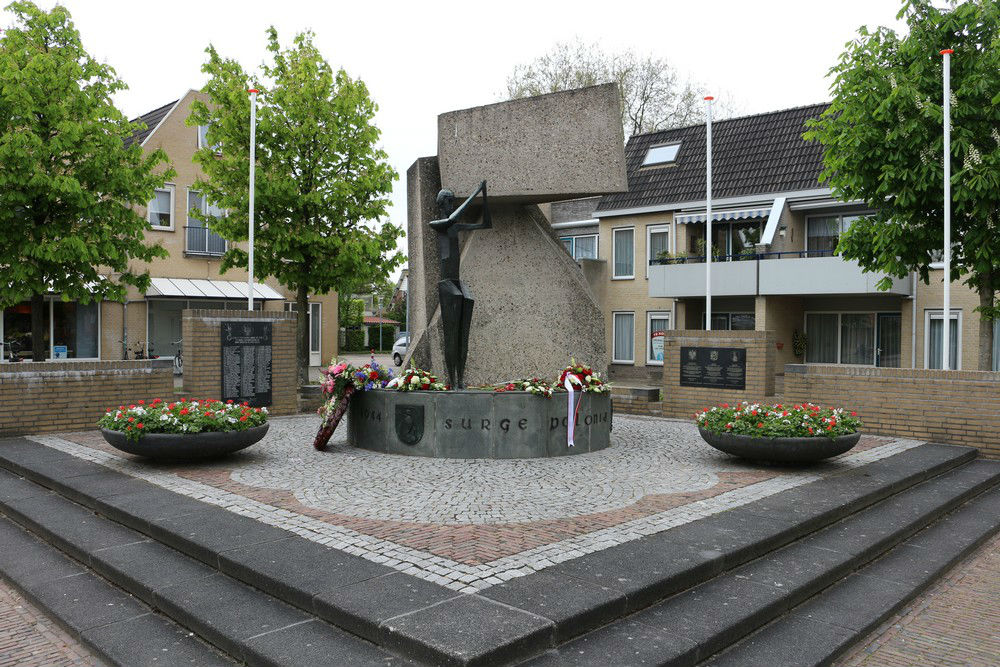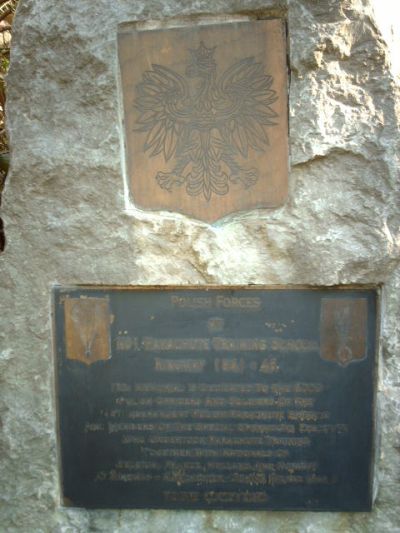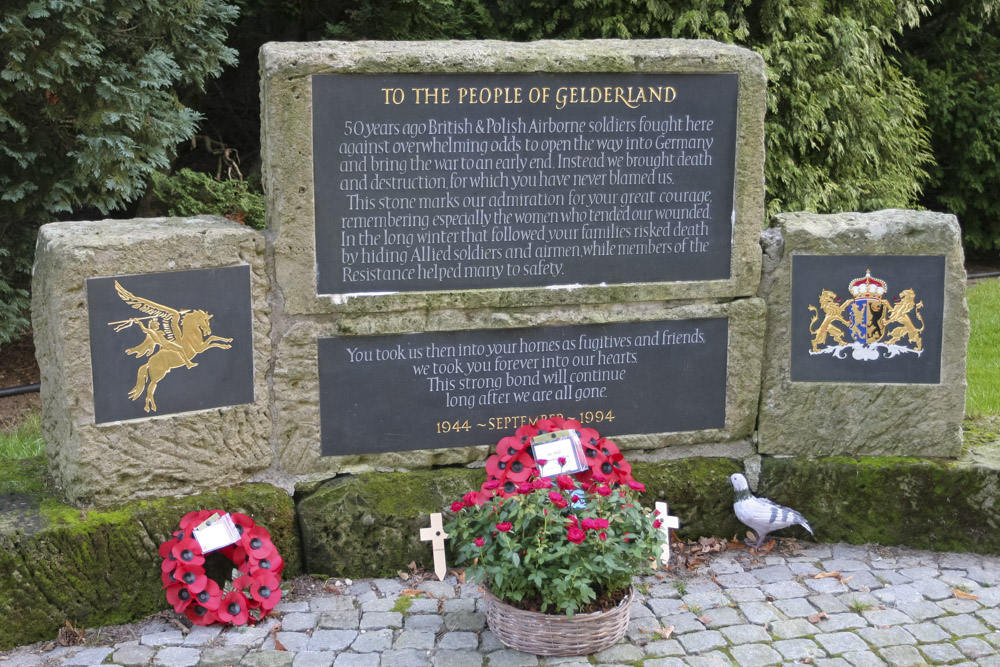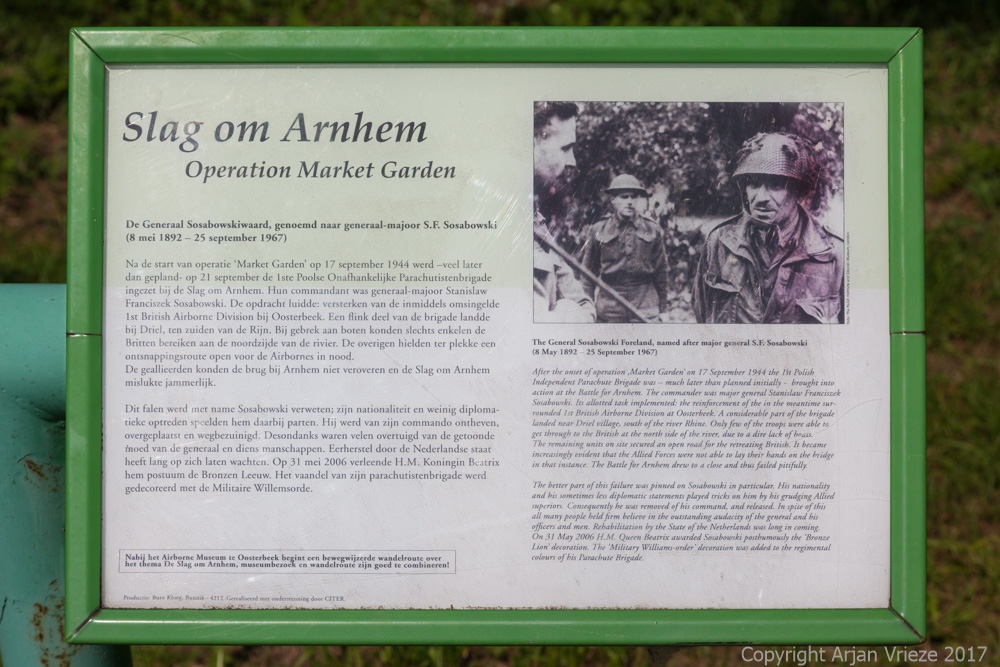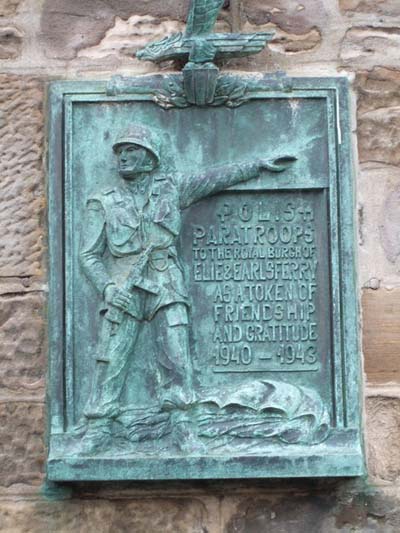Introduction
Stanislaw Franciszek Sosabowski would become one of the most well-known Polish militaries in history. Famous and reviled. Famous because of his flight from Poland and his immaculate career, but reviled because he dared to give his opinion. At the end of WWII he was sacrificed for the "failure" of operation Market Garden. The well-deserved recognition would not come until many years later.
Difficult youth
Stanislaw Franciscek Sosabowski was born on 8 May 1892 in Stanislawow, a small town in Galicia. In that time, Galicia was part of Austrian-Hungarian Poland. Nowadays, it lies in Ukraine. Stanislaw grew up in a family with 4 children (besides Stanislaw, his brother Andrzej and sisters Janina and Kazimiera). At a young age, his father died (1904). What his mother earned was insufficient to provide for the Sosabowski family, so Stanislaw earned an additional income by tutoring other kids in the French language and mathematics. He had a talent for it and teachers therefore recommended him to parents of pupils who were not doing so well. Despite his difficult youth, he was able to follow an education. In 1910 he graduated with honours from the gymnasium and ultimately got a job as bank employee. During his youth he enjoyed mountain climbing and skiing and learned how to survive in the wild. All experiences that he would benefit from later in life.
It was during this period that Stanislaw also got involved with organisations that would later form the basis for the Polish independence. For instance, he was a member of the Legion of Marksmen and the Association of Polish Youth. In 1910 he became commander of the division that was founded by the Scouting, that would later be the Armia Polska. More and more he was found within the circle of people fighting for Polish independence. He left for Cracow to study at the Higher School of Commerce. Here he was involved in several activities regarding Polish independence. In October 1911 he was co-organizer of a training camp of the Scouting, which was in fact a military training camp. When he returned to Stanislawow in 1912, he became commander of the XXIV Legion of Marksmen of the Scouting. He would carry the sable he received as a souvenir of this activity with him until the end of his career. Due to an altercation with the management of the Scouting organisation, Stanislaw Sosabowski resigned from his position in 1913. Many wanted to follow him, but he requested them to stay with the organisation, in order from preventing it to fall apart. A true example of the unselfish attitude that would portray Sosabowski in his later career.
Definitielijst
- division
- Military unit, usually consisting of one upto four regiments and usually making up a corps. In theory a division consists of 10,000 to 20,000 men.
First World War
During the First World War he was mobilised as corporal with the 58th Emperial and Royal Infantry Regiment within the Emperial Austrian-Hungarian Army. He quickly distinguished himself as a soldier and soon became a sergeant. In 1914 he was sent to the front with the Russians and experienced his baptism of fire at Przemysl. On 15 June 1915 he was injured by shell fragments and ended up in the hospital of Lublin.
In 1917 he was promoted to 2nd lieutenant and married Maria Tokarska. In the same year, his first son Stanislaw Janusz was born in Brno. Because of his injuries Stanislaw was found unsuitable for front service and so he served as a Staff Officer at the Austrian Headquarters. In 1918 he requested to be relocated to Lublin. As a Lieutenant he came into contact with other Polish officers in Austrian service. He also met members of the so-called Polish Military Organisation led by Major Seweryn Burhardt-Bukacki. On 1 November 1918 he joined the Polish army. On 15 November he was promoted to Captain. Among other things he organised the return and the disarming of many Ukrainian soldiers from the former Austrian army.
Definitielijst
- Infantry
- Foot soldiers of a given army.
- Regiment
- Part of a division. A division divided into a number of regiments. In the army traditionally the name of the major organised unit of one type of weapon.
Interbellum
In 1919 he was assigned to the Ministry of Military Affairs in Warsaw. Together with his family he settled in the military suburbs Zoliborz in Warsaw. His position took him to Belgium for a short period of time. In Spa he was responsible for the resurrection of Poland with the aid of the Allies. On 9 November 1920 he was promoted to Major. Also during the Polish-Russian war from 1919 to 1920 he wanted to go to the front. The Polish Minister of Defence decided however that someone with the capacities of Sosabowski was of greater use as a member of the General Staff. This was confirmed in writing by the Minister of Defence, Kazimierz Sosnowski, in a letter dated 28 April 1921.
From 28 October 1922 onward Stanislaw Sosabowski was employed by the General Staff of the Polish army, the "Wyszsza Skola Wojskowa", in Warsaw– an education that would provide many high-ranked Polish militaries. In that same year, his second son Jacek was born. After finishing his education in 1927, he was placed at the General Staff as staff officer. His duty involved the building of the Polish army and officers corps. In March 1928, he was promoted to lieutenant-colonel and was given command of the 75th Infantry Regiment in Chorzow and later in Rybnik. In that same year he was appointed to deputy commanding officer of the 3rd Mountain Riflemen Regiment – a Polish elite group from Podhale in Bielsko-Biala. In 1930 he was already a teacher and later the head of the Army General Staff College. After six years, Sosabowski longed for an operational position and became commanding officer of the 9th Infantry Regiment within the 3rd Infantry Division in Zamosc. In 1938 tragedy struck for the Sosabowski family. His eldest son Stanislaw Janusz was severely injured in an incident and in the fall of that same year his youngest son was killed in an accident. Sosabowski suffered a nervous breakdown and returned to Warsaw.
In January 1939, Sosabowski was promoted to colonel and was given the command of the 21st Infantry Regiment, called "Dzieci Warszawy" (The Children of Warsaw) – one of the most prestigious units of the Polish army. In May of that year Sosabowski led then annual military parade in Warsaw. In the course of time Sosabowski had become known as a stern but righteous officer. He expected devotion and discipline from his subordinates, but also expected this same attitude from their officers and superiors.
Definitielijst
- Division
- Military unit, usually consisting of one upto four regiments and usually making up a corps. In theory a division consists of 10,000 to 20,000 men.
- Infantry
- Foot soldiers of a given army.
- Regiment
- Part of a division. A division divided into a number of regiments. In the army traditionally the name of the major organised unit of one type of weapon.
World War Two
During the German attack in September 1939, the regiment of Sosabowski was part of the het Modlin army. Eventually he and his units became trapped behind enemy lines. Thanks to exceptional leadership he guided his entire regiment out of the enemy besiegement, earning him the Military Award Virtuti Militari.
After the capitulation, Sosabowski was sent to the prisoners of war camp in Zyrardow. Because the surveillance was so poorly he easily managed to escape together with his son Stanislaw. Father and son decided to join the internal resistance of Poland. In November 1939, Sosabowski contacted the Service for Polish Victory (Sluzba Zwyciestwu Polski). Sosabowski was sent to Lwow to organize the resistance. This proved impossible. Through Lwow he eventually was able to reach the mountains of Czechoslovakia, and via Budapest caught a plane to Venice and finally Paris. This made him the first higher officer able to escape from Poland. On 22 December 1939 he reported himself to General Wladyslaw Sikorski at his office in Paris.
In January 1940 he obtained his first command as deputy commander of the new Polish 4th Infantry Division in Coetquidan, Brittany. Not much later he became deputy commander of the 4th Infantry Division in Les Sables d'Olonne, which was led by General Rudolf Dreszer. Most of the time this general was absent, so in fact Sosabowski was in command of the division. In June 1940, Sosabowski was again involved in battle with German troops, albeit not in his own country, but in France. After the battle, Sosabowski organised the evacuation from the Polish soldiers in France. In the nick of time he managed to escape aboard the steamer Abderpool to the United Kingdom with 3,200 men of his division.
On 21 June 1940 he arrived in Great Britain and ultimately formed his own 2nd Polish Fusiliers Brigade. This unit was discontinued by superior order, without reassigning the people to another military unit. Sosabowski then took the initiative himself to form the 4th Polish Fusilier Staff Brigade. The aim of this brigade was to recruit and train Polish volunteers from the USA and Canada. In October 1940 this brigade was relocated from Ellioc to Fife in Scotland. Here the brigade had the task to defend the Four of Fourth bay from a German invasion out of Norway.
In February 1941, the exiled Polish government decided to form a parachute unit. Sosabowski joined this unit together with some of his best and most loyal men. The reason for this was that the exiled Polish government regarded this as the best way to help free Poland. After all, commanding an army by air would be the quickest way. The 1st (Polish) Independent Parachute Brigade was created.
Definitielijst
- Brigade
- Consisted mostly of two or more regiments. Could operate independently or as part of a division. Sometimes they were part of a corps instead of a division. In theory a brigade consisted of 5,000 to 7,000 men.
- capitulation
- Agreement between fighting parties concerning the surrender of a country or an army.
- Division
- Military unit, usually consisting of one upto four regiments and usually making up a corps. In theory a division consists of 10,000 to 20,000 men.
- Infantry
- Foot soldiers of a given army.
- invasion
- Armed incursion.
- regiment
- Part of a division. A division divided into a number of regiments. In the army traditionally the name of the major organised unit of one type of weapon.
- resistance
- Resistance against the enemy. Often also with armed resources.
Parachute Brigade
In Upper Largo, the plot of land known as "The Monkey Grove" and the self-built training tower at Lundin Links, became the training site of Sosabowski and his brigade. Between 1941 and 1944 a training at the British parachute training centre Manchester followed. The discipline and fighting spirit of the Polish was developed further thanks to them being deployed on Polish territory. Especially under the inspired command of Sosabowski, the unit became an elite unit that even amongst the British commanded respect. Soon the British had to conclude that especially the leadership skills of Sosabowski determined the qualities of the Polish Brigade. General Frederick Browning, the commander of the British parachute troops, devised a plan to put the Polish soldiers directly under command of the British in order to improve the quality of the British parachute troops.
In September 1942 the British made a proposal to form a British-Polish para division under the command of Sosabowski. Accepting this position would strengthen Sosabowski’s personal position, but would also have an adverse effect that would lead to a great conflict and alienation between the British and Polish interests. We must not forget that the Polish Brigade was founded to participate in the liberation of Poland. Placing the brigade under British command would change this goal and the exiled Polish government would lose authority of the brigade. The high and mighty General Browning could not phantom the decision of the patriotic Sosabowski to decline the offered position. When on the advice of Sosabowski, the Chief of Staff of the Polish armed forces in Great Britain, General Kazimierz Sosnowski, permanently refused to place the 1st Independent Polish Parachute Brigade under British command in the fall of 1943, General Browning took the issue higher up, which led to the governmental cancellation of the agreement between General Sikorski and Sir Alan Brooke to deploy the Polish Brigade in Poland.
Subsequently all cooperation to the Polish Brigade was discontinued or delayed. Aircraft and supplies of training purposes were no longer delivered and they threatened to abolish the brigade and to make it part of the Polish armoured division. There was no other option than for Sosnowski to give in and on 6 June 1944 the 1st Independent Polish Parachute Brigade came under British command. By then it was too late to be deployed at D-Day. This event put a great strain on the relationship between Sosabowski and Browning. In June 1944 Sosabowski was promoted to General-Major. However, things would change quickly. During the Polish uprising on 1 August 1944, the son of Sosabowski was injured in Warsaw, but managed to escape.
In September 1944 Sosabowski and his men finally could prove themselves in battle. His Polish Brigade was deployed during Operation Market Garden. Meanwhile the relationship between Sosabowski and Browning had taken a turn for the worse, and Sosabowski openly expressed his concerns regarding Browning’s leading his troops. In the end, Sosabowski’s concerns proved right, because of the loss of the 1st Airborne Division and the bridge in Arnhem. Although Sosabowski was right, the British held him partly responsible for the failure of the operation. They were looking for a scapegoat outside the British ranks. The heroic part of the Polish during the battle was therefore pushed into the background and was only acknowledged years after the war. Unfortunately this meant the end of Sosabowski’s career. A report made up by Browning completely demolished the reputation of Sosabowski and portrayed him to be an unsuitable and rebellious commander.
On 9 December 1944, Sosabowski received a letter from the Polish president in exile, Wladyslaw Raczkiewicz, in which he was relieved of his duties. However, the president made it clear in the letter that he was pressured by the British in doing so. Of course Sosabowski didn’t take this laying down. He was of the opinion that this tarnished his reputation and requested that an investigation would be started regarding the British accusations. Even his own exiled Polish government didn’t support him in the matter, as the government had other things to worry about in January 1945, given that in Lublin a provisional Polish government had been installed by the Soviets. In protest against how their commander was being treated, the men of the Polish Parachute Brigade went on hunger strike on 25 December 1944, but ended it on Sosabowski’s request. On 27 December he officially withdrew.
Definitielijst
- brigade
- Consisted mostly of two or more regiments. Could operate independently or as part of a division. Sometimes they were part of a corps instead of a division. In theory a brigade consisted of 5,000 to 7,000 men.
- Browning
- American weapon’s designer. Famous guns are the .30’’ and .50’’ machine guns and the famous “High Power” 9 mm pistol.
- D-Day
- The day of the long awaited invasion of western Europe in Normandy, France, 6 June 1944. After a long campaign of deception the allies attacked the coast of Normandy on five beaches to begin their march on Nazi Germany. Often explained as Decision Day, though this is entirely correct. The D stands for Day as generally used in military language. In this case it means an operation beginning on day D at hour H. Hence “Jour J“ in French.
- division
- Military unit, usually consisting of one upto four regiments and usually making up a corps. In theory a division consists of 10,000 to 20,000 men.
Postwar period and recognition
In 1947, Sosabowski became an honorary member of the Veteran Association of the Polish airborne troops (ZPS: Zwiazek Polskich Spadochroniarzy), which was party setup by him. It was a veteran organisation for former members of the brigade. Sosabowski did not return to Poland and succeeded in bringing his family members to London in 1948.
In the winter of 1947 and 1948, Sosabowski officially retired. Returning to Poland still was no option for him. He tried to start his own company, renovated houses and started a refurbishing company. Eventually at the age of 57, he got a job as a production worker at the Electrical Assembly Plant CAV Electrics Acton. In his spare time he worked on a book for the Polish Parachutists Association writing about the history of the Polish para troops. The book was published in 1957. Later he wrote his memoirs. He finally stopped working at the age of 75.
On 25 September 1967, Sosabowski died at Hillingdon Hospital in Middlesex due to a hart disorder. He was buried with military honours in Warsaw on 14 October 1967 in the military cemetery. His name would be honoured for many years to come. Ever since the liberation of Poland from the Soviet oppression, the 6th Polish Parachute Brigade carries the name Sosabowski. In 1988, Sosabowski posthumous received the knight commander’s cross in the Order of Polonia Restituta. In 2006 he was honoured by the Dutch government by posthumously rewarding him with the Bronze Lion. This took place on 31 May of 2006 and was given out to his surviving relatives, together with the Military William Order 4th class for the 1st Independent Polish Parachute Brigade.
Definitielijst
- brigade
- Consisted mostly of two or more regiments. Could operate independently or as part of a division. Sometimes they were part of a corps instead of a division. In theory a brigade consisted of 5,000 to 7,000 men.
Information
- Article by:
- Wilco Vermeer
- Translated by:
- STIWOT translator
- Published on:
- 10-03-2015
- Last edit on:
- 05-01-2024
- Feedback?
- Send it!
Related sights
Related books
Sources
- GEORGE F. CHOLEWCZYNSKI, De Polen van Driel, Lunet, Naarden, 1990.
- GEORGE F. CHOLEWCZYNSKI, Poles Apart, Sarpedon Publishers, New York, 1993.
- RAWSON, A., Poland's Struggle, Pen & Sword, Londen, 2019.
- STANISLAW M. SOSABOWSKI, Freely I served, Battery Press Inc., Nashville, 1982.
- ZALOGA, STEVE & GERRARD, HOWARD, Poland 1939:, Osprey Publishing, Oxford, 2002.
